No, it wasn’t the masons who distorted this wall. It was just the lens. It is a wide angle zoom lens 16 – 35 mm / 1:2.8. As you can see, the brickwork seems to be curved. In fact, this is a typical aberration of a lens: the so-called distortion.
What is distortion?
When horizontal and vertical lines outside the center of the image are no longer straight but curved, this is called distortion (sometimes incorrectly called distortion). Attention: Distortion has nothing to do with converging lines! Distortion occurs in two variants: barrel-shaped and cushion-shaped distortion. The graphic illustrates the two types of distortion:
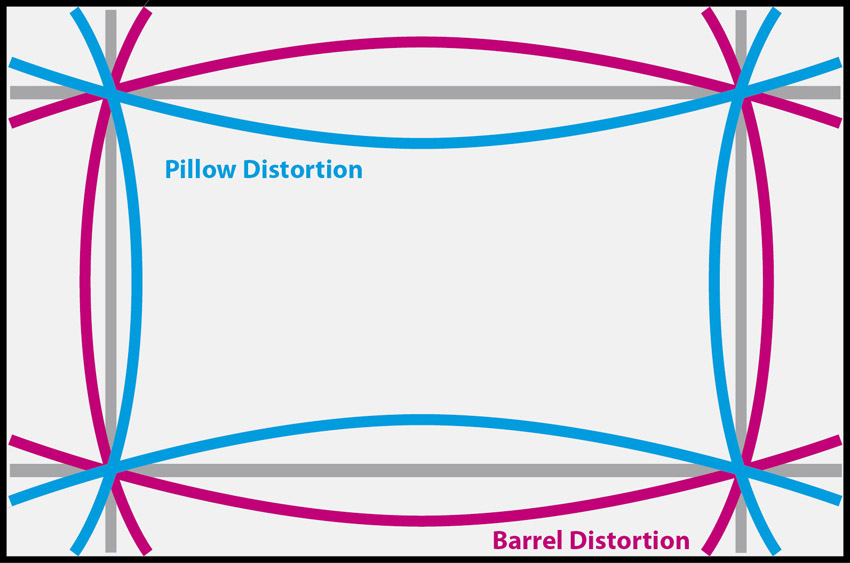
The featured image of this article thus shows barrel distortion.
Basically, wide-angle lenses are more susceptible to this lens defect than telephoto lenses, and zoom lenses are more affected by it than fixed focal lengths. With zoom lenses, it can happen that they register barrel distortion at short focal lengths and cushion distortion at long focal lengths and vice versa. Zoom lenses are practically never completely free of distortion.
For most subjects, slight distortion is no big deal. In architectural and product photography, however, it is hardly acceptable.
Distortion in digital photography
In analog photography there was no possibility to correct distortion afterwards. In digital photography, however, distortion is very easy to eliminate, in the best case with a single mouse click. In programs as Lightroom, one simply sets the checkmark at “Enable Profile Corrections”.
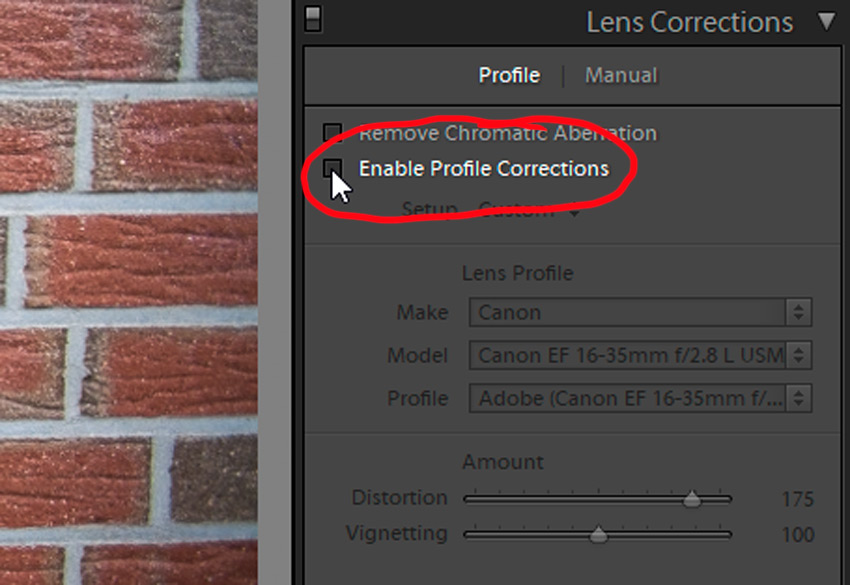
The program then searches from a database for the correction data for the lens in question, and in the case of zoom lenses for the focal length currently in use, and applies it to the image. In most cases, the distortion is then completely gone.
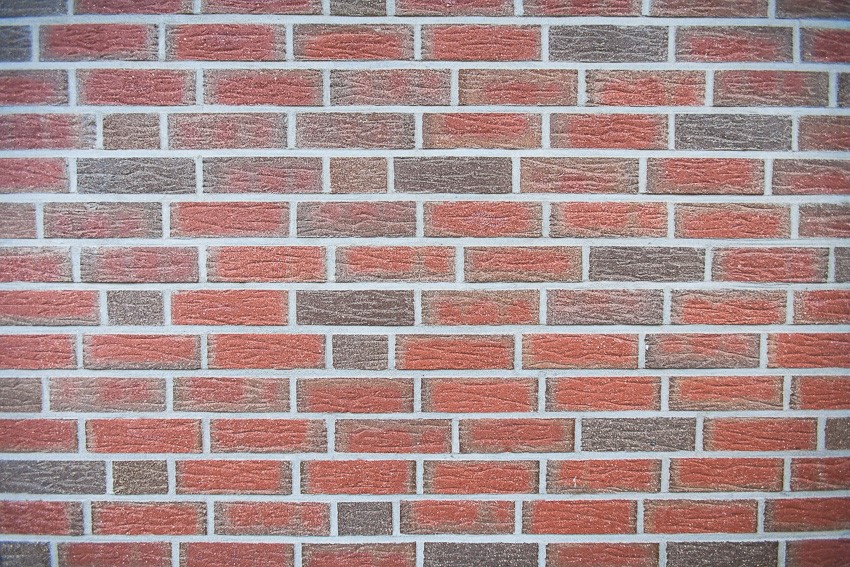
In the picture above the distortion has not yet completely disappeared. But this is not a problem, as the automatic correction can be further corrected manually at any time:
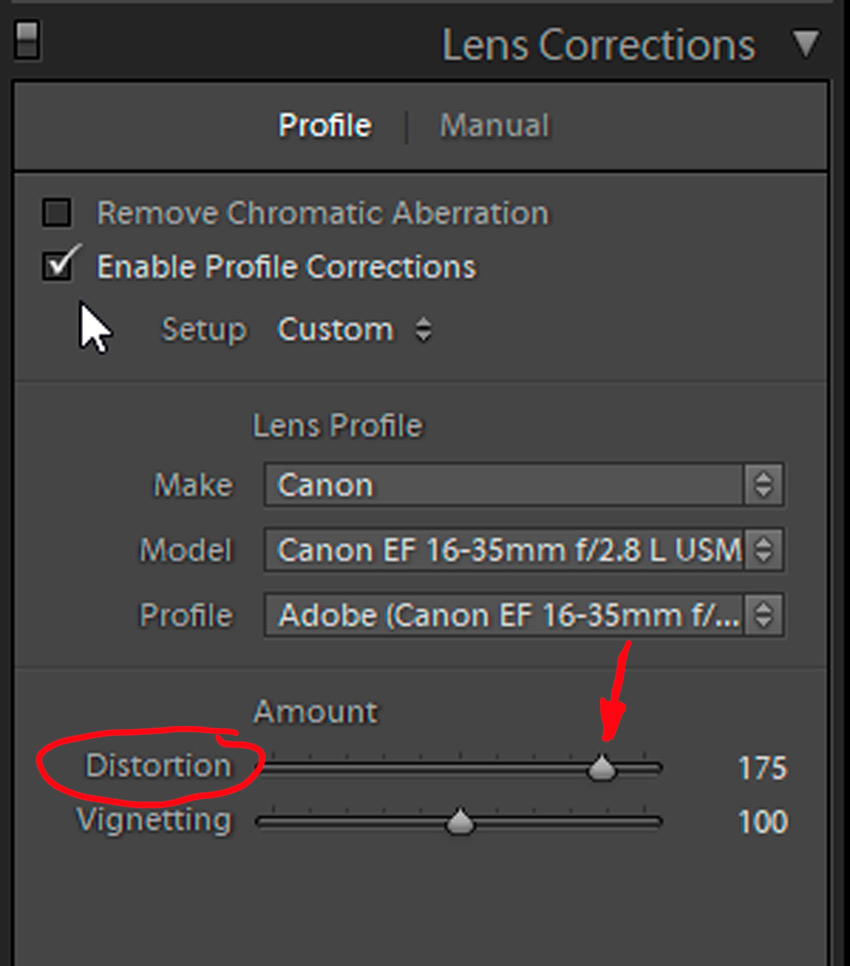
If profile correction is activated, you can use the amount slider to increase or decrease the distortion correction as required.
If the used lens is not available in the database of the program, the correction can be done completely manually at any time. The function for this is available in Lightroom and Adobe ACR under the tab “Manual”.
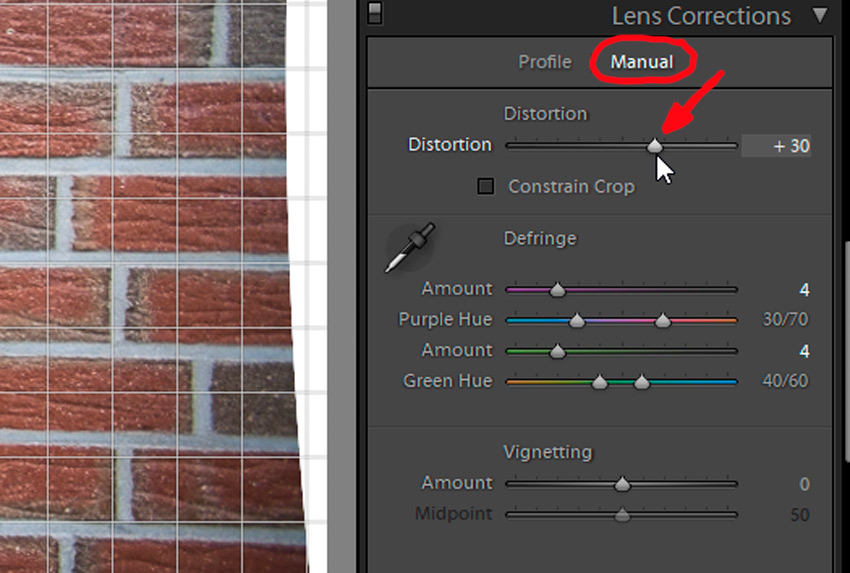
Note:
Some camera manufacturers, such as Olympus, have a distortion correction function built into the camera. Therefore the lenses of these manufacturers do not appear in the list of available lenses. So this is not a disadvantage.


Leave A Comment